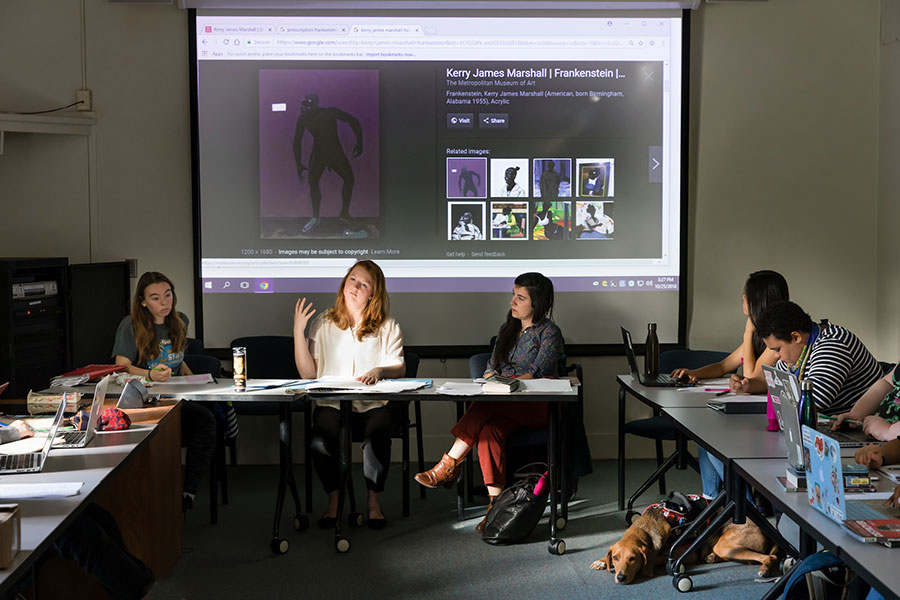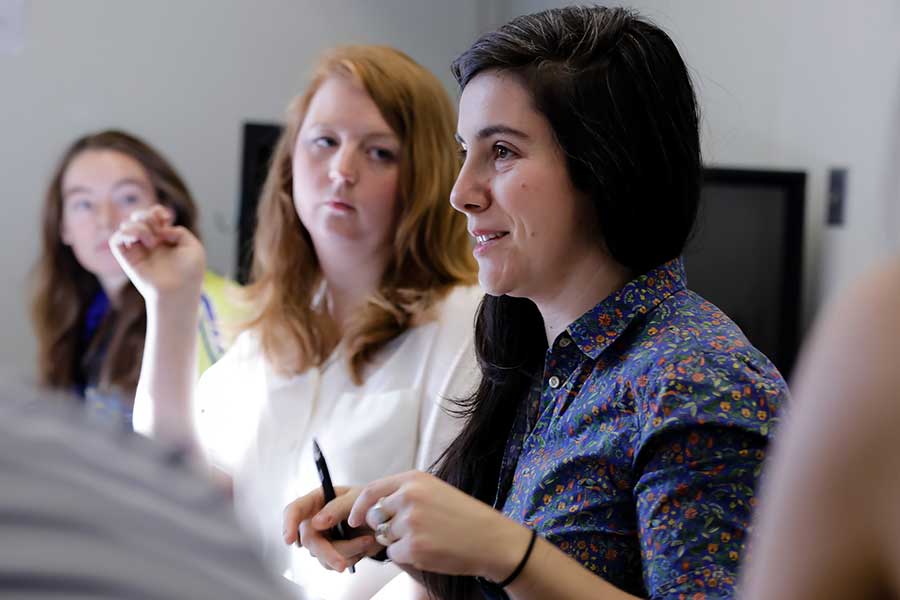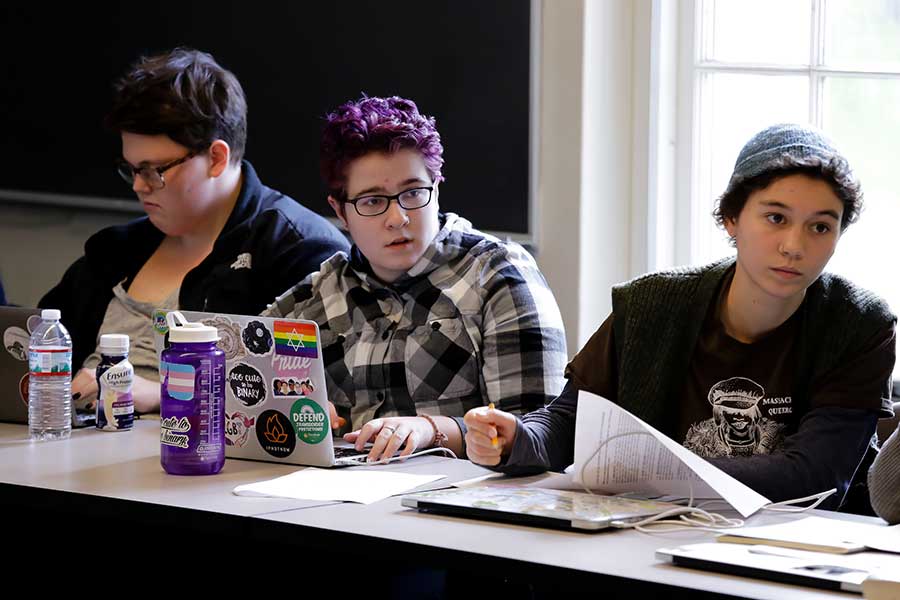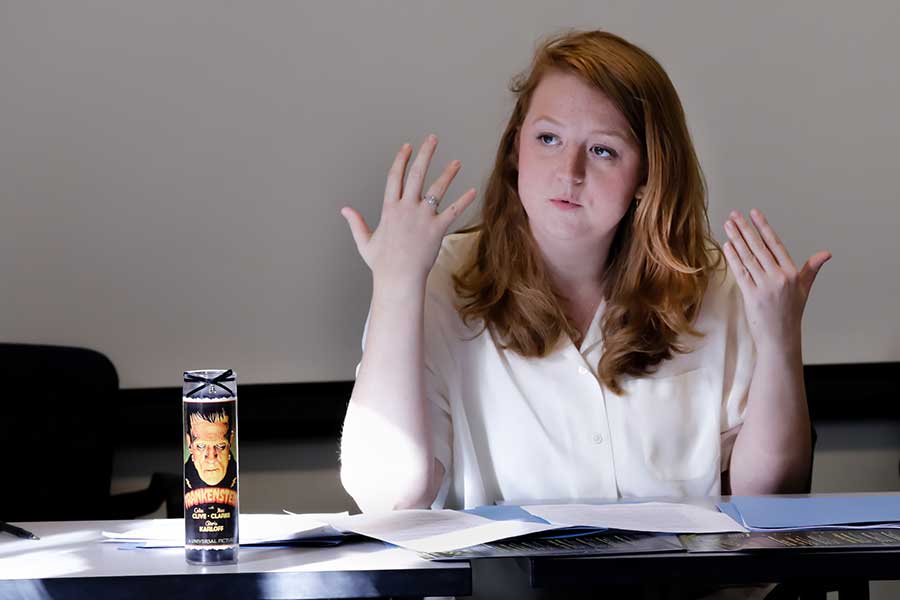
Two centuries ago, a young woman wrote what some have called the world’s first science fiction novel—a story that has since been adapted into everything from plays to TV shows to Halloween costumes, and that continues to reflect and shape societal attitudes about scientific innovation, reproduction, gender, race, slavery, disability and belonging. This fall, Assistant Professor of English Amelia Worsley is marking the 1818 publication of Mary Shelley’s most enduring creation—what the author called her “hideous progeny”—with a course on “Frankenstein: The Making of a Monster.”

Co-taught by Worsley and Smith College professor Lily Gurton-Wachter, the course meets alternately on the Smith and Amherst campuses. Like fans around the world participating in the bicentennial Frankenreads celebration, the students began the semester with a close reading of Frankenstein; or, The Modern Prometheus. Then they delved into Shelley’s writing of the novel—at age 19, while on holiday in Switzerland, shortly after the death of her first child and the birth of her second—and her family influences, particularly her parents, feminist author Mary Wollstonecraft and radical political philosopher William Godwin, and her husband, Romantic poet Percy Bysshe Shelley. The course also involves texts by Margaret Atwood, Susan Stryker and Mary Jacobus that relate Frankenstein to issues of gender and sexuality, and a screening of James Whale’s 1931 film with an iconic portrayal of the creature by Boris Karloff.
Let’s pause here for a clichéd but important reminder: the title character, Victor Frankenstein, is the scientist who assembles the creature and brings him to life. Called “monster,” “enemy” and “slave” in the text, the creature is never given an official name. “I use ‘the creature’ because I think it’s the most sympathetic,” says Worlsey.

As the course demonstrates, audiences and creators have found countless ways of judging, relating to and reimagining this figure over 200 years. “The creature has been used, I think, as a kind of projection screen,” Worsley says, “viewed from many, many different perspectives.” Various adaptations present him as having yellow or green or even blue skin, for example. A frontispiece to the 1831 edition of the novel, by artist Theodore von Holst, depicts him as an Adonis with bulging muscles and flowing hair. In Shelley Jackson’s 1995 electronic hypertext adaptation, Patchwork Girl, a fictional Mary Shelley creates a female monster. And in Victor LaValle’s recent graphic novel Destroyer, a doctor reanimates her son, an African-American child killed by police.
Far from the grunting brute that we might think of today, Shelley’s original creature is well-read and able to articulate deep and complex feelings about his origins and his alienation from human society. In an October meeting of Worsley and Gurton-Wachter’s class, students discussed some of the famous texts that the creature himself reads within the novel, including Goethe’s Sorrows of Young Werther and Milton’s Paradise Lost. They considered how the creature patterns his worldview and behaviors after those of Goethe’s sorrowful title character, with Worsley pointing out that thousands of real-life Europeans had done the same during the “Werther-mania” of the late 18th century. Then the class split into groups to discuss three different passages from Paradise Lost, drawing comparisons and contrasts between Shelley’s creature and Milton’s descriptions of Adam, Eve and Satan. They noticed parallels between Victor Frankenstein and the poem’s Creator figure, too: “God was referred to as a ‘victor’ in this passage,” said one student.

Soon the students will attend a public Kahn Institute Symposium at Smith titled “Creativity and the Creature: Mary Shelley’s Frankenstein at 200,” featuring Stryker and Jackson among its speakers. There will be a visit to the Ruth Mortimer Frankenstein Collection in the Rare Book Room at Smith, and class meetings that link Shelley’s text to Kazuo Ishiguro’s 2005 novel Never Let Me Go, Alex Garland’s 2015 film Ex Machina and issues of climate change (which, nowadays, is sometimes said to produce “Frankenstorms”).
“The final project they’re going to do is a research project where they can find materials related to Frankenstein that we haven’t put in our syllabus,” Worsley says. “We’re going to have a class conference at the end where they all present their research to each other.”
The monster, it seems, will be whatever they can make of it.